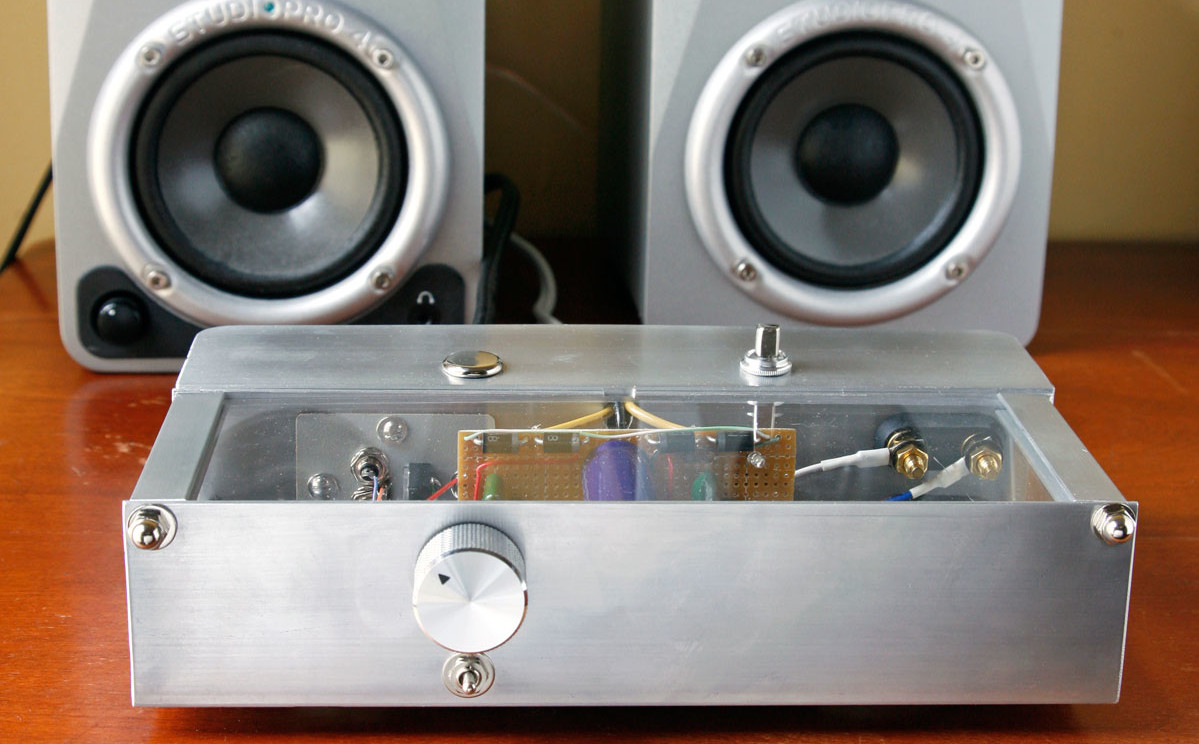
Skeletal System
Squelette is a see-through amplifier that sounds ridiculously good while showing off your soldering (it looks nothing like a typical audio product). Build it with common materials and enjoy music played through a component you made yourself.
I love to build audio gear: speakers, turntables, preamplifiers, tube amps, transistor amps, and anything else that reproduces music. A few years ago I read rave reviews of an exotic audiophile amplifier based on a National Semiconductor amplifier chip. After more research, I learned that NatSemi’s Overture series of audio amp ICs packs a ton of musical goodness into one robust and flexible chip, combining all the features of a well-designed transistor amp.
I decided to use their LM1875 chip to make a small, simple stereo amplifier. I dubbed the result “Squelette” (skeleton in French), after mechanical wristwatches that show their internal workings. Squelette is a chip amp in its simplest form: it has 2 source inputs and a volume control, and it puts out a useful 11 watts per channel. Building it requires no exotic parts; I made careful design choices and sourced everything except for the LM1875 from RadioShack and the plumbing aisle at the hardware store. Here’s how you can build your own, from materials costing less than $50 [This figure assumes that you have common components (resistors, capacitors, switches, etc.) already on hand. The cost will be significantly higher if you buy everything new and in small quantities].
Parts photo by Ed Troxell.
Step photos by Ross Hershberger.
Illustration by Timmy Kucynda.


